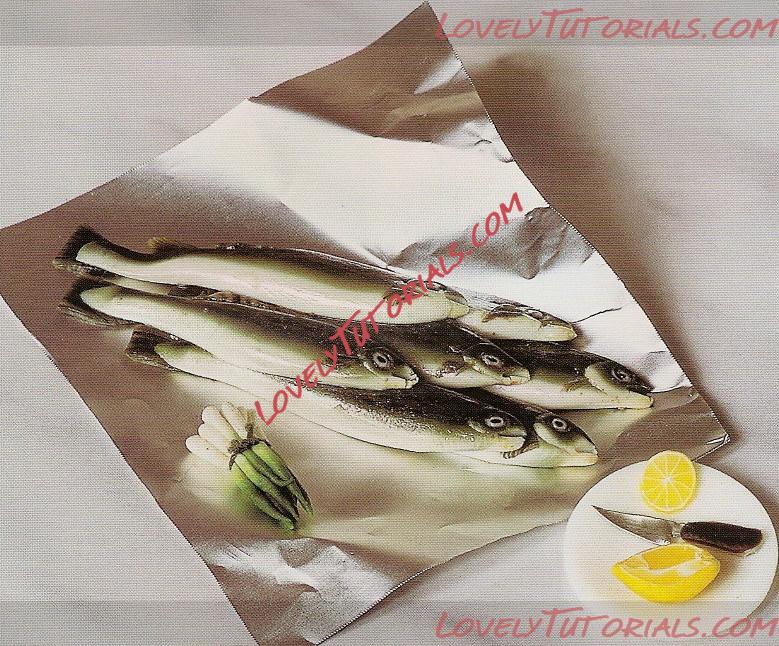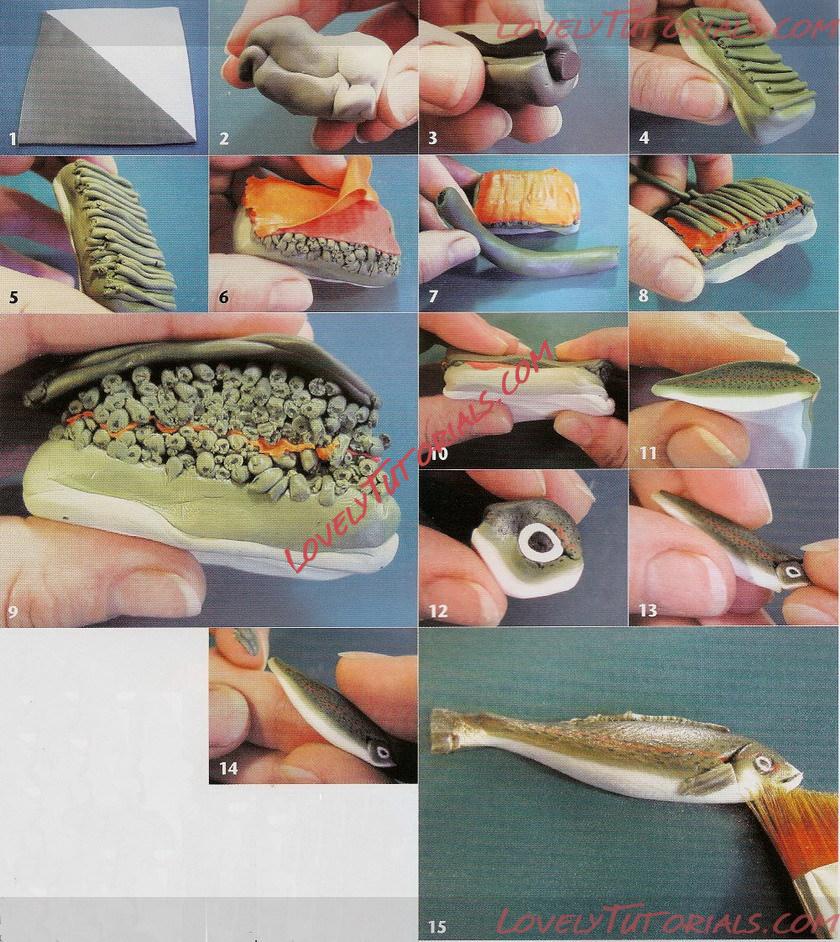Огромная благодарность
Angie Scarr за Мастер-класс
This project makes further use of complex shading, stacking and spot-patterning techniques. If you successfully tackle this one, you've certainly earned your 'mad miniaturist' badge! You'll be able to attempt anything; your imagination is the only limit.


Method
1 and 2 Make a stack of clay of graduating hues from white to olive green by the Skinner shading technique, and lengthen the clay until it forms a rectangle.
3 Make a spot-patterned cane with a black centre and wrap it in olive green. The olive green layer should be as thick as the diameter of the black centre. Lengthen this cane by rolling into a thin length and cut into short, equal lengths.
4 and 5 Lay these rolled lengths on the base and start to build up. With the first couple of layers, if you wish, intersperse with plain olive green clay.
6 After about three layers,
add a very thin sheet of salmon-coloured clay or one of salmon and one of orange.
7 Using the Skinnet shade technique, make another spotted cane, this time wrapping it in a skin of olive green to black hues.
8 Starting with the paler end, use this new cane to build up four to five more layers of the spot pattern.
9 Finally, add a layer of dark olive green (olive green mixed with black) to the top, and a layer of white to the bottom.
10 Lengthen this cane by squeezing and stretching
11 Cut one end of your
cane to reveal a beautiful spotty pattern.
12—14 Make a cane for the eye and fins, Ihen assemble by the same method as the haddock
15 Add a very subtle dab of pearl-hued Fimo powder to the back and belly of the fish. Harden in the oven. Once done, add a very light coating of gloss varnish for a wet look.



